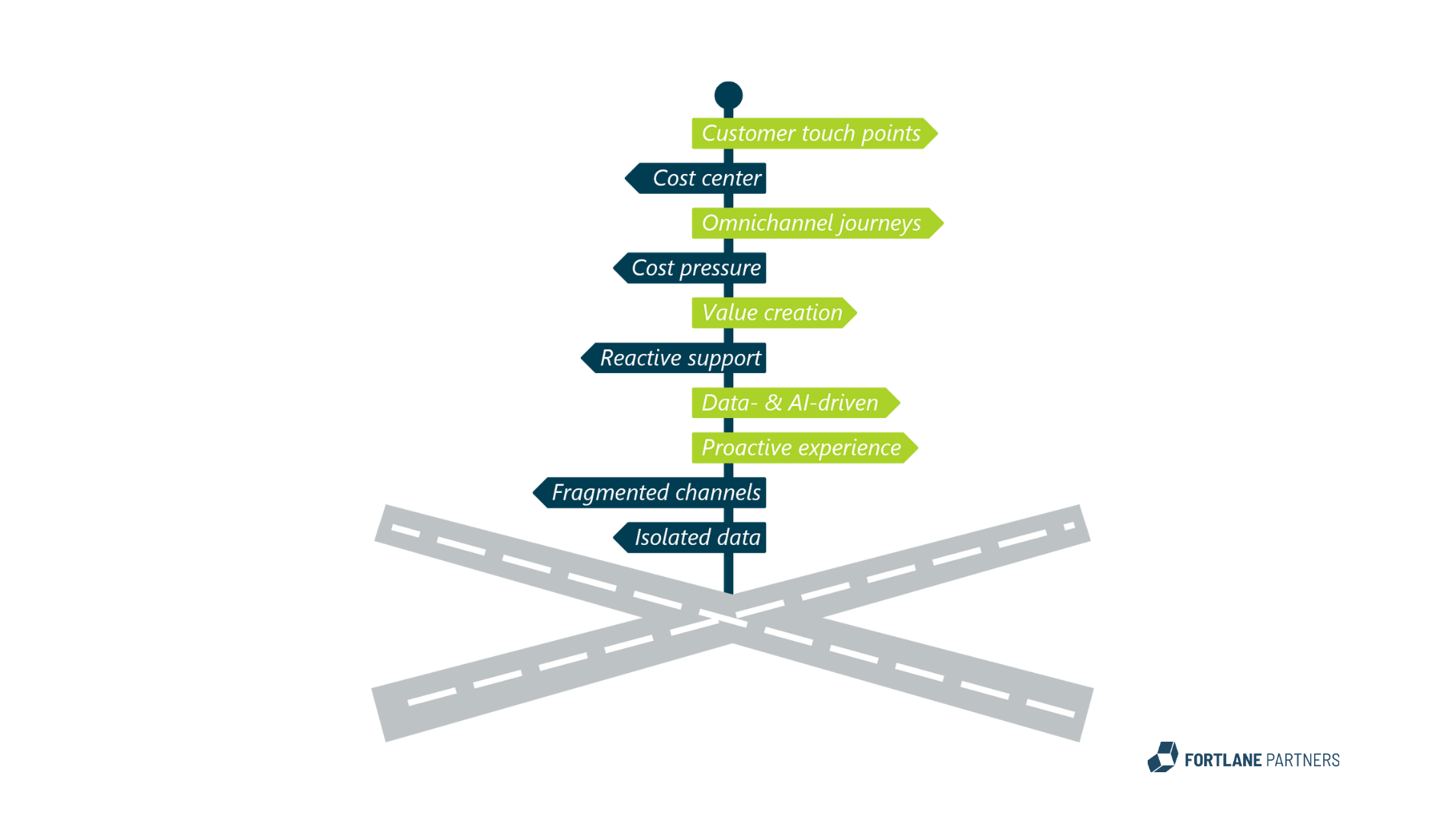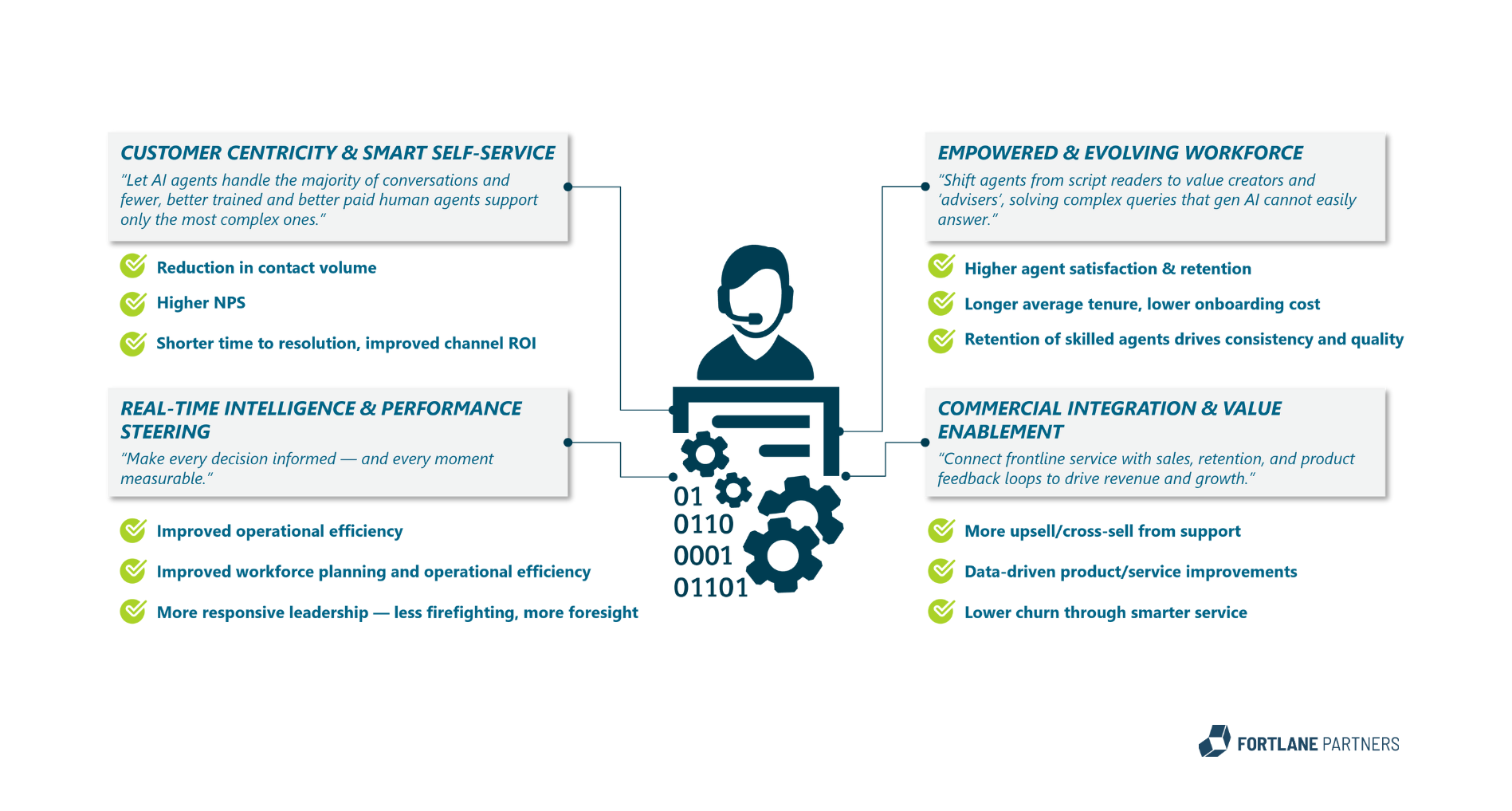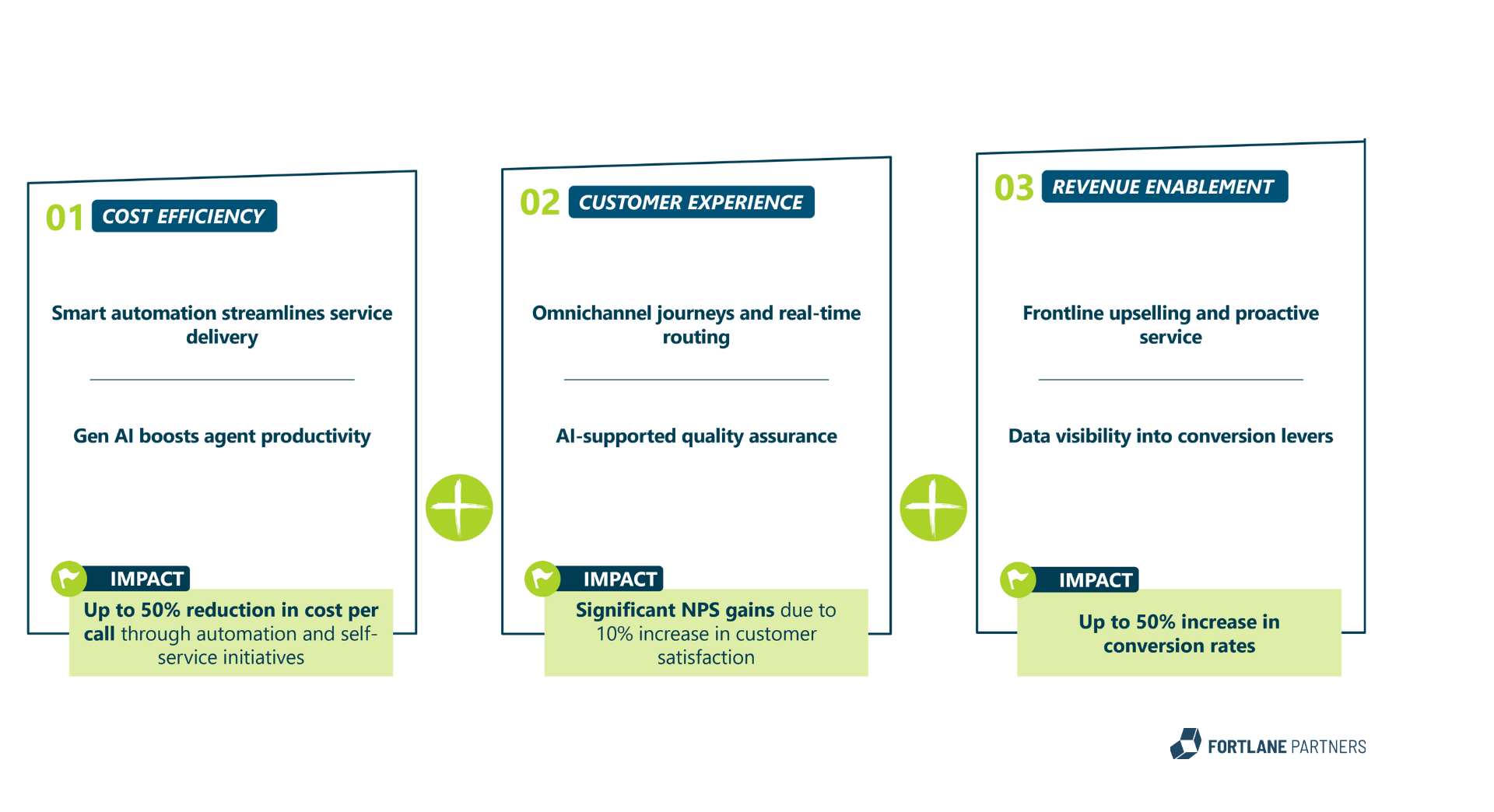From expense to asset: the contact center transformation
In today’s hyper-connected world, contact centers are facing an inflection point. Once viewed purely as operational cost centers, they now stand at a strategic crossroads. With rising customer expectations, rapid advancements in AI and automation, and increasing talent challenges, companies must decide: will the contact center remain a reactive support function – or evolve into a proactive engine for growth, loyalty, and insight? Forward-thinking organizations are already reshaping their approach.

Scroll down
The pressures driving change: why the status quo no longer works

Customer expectations have transformed dramatically. Influenced by digital-first experiences from leaders like Amazon and Apple, today’s consumers expect service that is immediate, seamless, and personalized across every channel. Long wait times, disjointed interactions, or being passed between agents are no longer tolerated.
Simultaneously, technology is raising the bar. The emergence of generative AI, real-time data intelligence, and integrated platforms means companies can now deliver personalized service at scale. Yet many organizations remain stuck with fragmented systems and outdated tools that limit their ability to respond.
On top of this, workforce challenges are intensifying. Contact centers face difficulties attracting and retaining skilled agents, especially in hybrid environments. Repetitive tasks and lack of career progression further reduce engagement and drive up attrition.
Redefining the role: what a future-ready contact center looks like
To move forward, companies must reimagine the contact center not just as a service hub, but as a driver of commercial and customer impact. This shift means anchoring operations around four core principles:
- Customer centricity & self-service
Let AI handle the repetitive queries, while human agents focus on complex, high-value interactions. Smart self-service reduces contact volume and improves customer satisfaction.
- Data-driven intelligence
Connected systems provide full context across channels and enable real-time decision-making. This improves operational planning, service personalization, and performance steering.
- Empowered workforce
Invest in training agents as advisors, not just script readers. Retaining skilled talent leads to consistency, quality, and better customer experiences.
- Commercial integration
- Embed upselling and feedback loops into frontline support. Every interaction is an opportunity to grow value, not just solve problems.

The business case: measurable impact across cost, experience, and revenue
The value of a transformed contact center is no longer theoretical – it’s quantifiable and compelling. Organizations that have embraced a digitally empowered, human-AI hybrid approach are seeing significant improvements across three dimensions: cost, customer experience, and revenue growth.
On the cost side, automation and AI are unlocking new levels of efficiency. Intelligent automation can reduce inbound contact volumes by up to 30%, while AI-assisted workflows boost agent productivity by 25 to 30%. At the same time, AI-led quality assurance drastically lowers monitoring costs and ensures higher consistency across interactions.
Customer experience also sees a marked uplift. Companies report over 10% improvements in customer satisfaction and Net Promoter Scores (NPS), largely driven by more personalized, faster, and seamless service. Smart routing and AI-driven triaging reduce wait times and eliminate unnecessary transfers, ultimately increasing the ROI of each customer interaction.
When it comes to revenue enablement, future-ready contact centers are evolving into growth engines. With better-equipped frontline agents and intelligent prompts, conversion rates can increase by up to 50%. Moreover, data from service interactions fuels targeted cross-sell and upsell efforts, and helps generate actionable product insights that feed back into broader commercial strategies.

How to start: a phased path to transformation
You don’t need a complete system overhaul to get started. Many organizations begin with a structured transformation roadmap that progresses in 4 steps:
- Diagnostic: Identify root causes across cost, experience, and scalability.
- Target design & business case: Define the future operating model and quantify benefits.
- Implementation in waves: Launch MVPs (e.g., AI routing, new service flows) and track impact.
- Scaling & enablement: Roll out across functions and geographies, supported by governance and training.
An agile, cross-functional approach ensures quick wins without disrupting operations. Success depends on sponsorship, change management, and a clear vision for the contact center’s future role.
Summary
The time to choose and act is now! The contact center is no longer a passive support channel – it’s a strategic lever for customer value and business growth. But unlocking this potential means acting decisively.
Organizations at the crossroads must ask themselves: Do we continue managing cost – or do we invest in creating value? For those ready to make the shift, the rewards are tangible: lower costs, higher customer loyalty, and new revenue streams. The future-ready contact center isn’t a nice-to-have. It’s a competitive advantage.
ContactGet in touch




